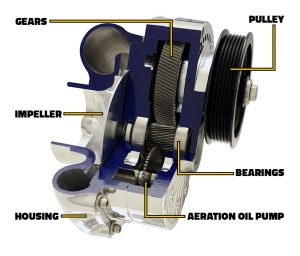Centrifugal superchargers have been around since the 1950s, but they’ve exploded in popularity over the last 20 years or so. Centrifugal superchargers are available for a wide range of vehicle applications — from race cars to street-driven vehicles to trucks — and manufacturers have continued to refine the technology and design of the popular power adders.
ProCharger is one of the manufacturers leading the way.
Centrifugal Supercharger Basics
Centrifugal superchargers are similar to turbochargers in many ways. However, centrifugal superchargers are actually driven off the engine by a belt, while turbochargers are exhaust driven. Centrifugal superchargers rely on an internal impeller to step up boost. Because boost depends on how fast the impeller spins, these units have traditionally not created as much boost at low rpms (turbo lag), because the impeller isn’t spinning fast enough.
Some supercharger manufacturers have worked to address this shortcoming.

ProCharger Overview
Lanexa, KS-based ProCharger has built a reputation for creating superchargers which maximize the advantages of centrifugal design while addressing some of its traditional disadvantages. For example, centrifugal superchargers typically offer lower discharge temperatures than top-mounted, Roots-style blowers. For an additional thermal advantage, ProCharger mounts its superchargers in a way that places them in a cool, fresh air stream. ProCharger superchargers also have a self-contained oiling design, which eliminates heat transfer from outside engine oil. This also eliminates the need for plumbing oil lines.
Centrifugal superchargers have a repuation for delivering less power at low rpms than Roots-style or screw-type superchargers. ProCharger superchargers address this issue with a gear-driven setup which features a high “step-up” ratio of 4.10:1. According to ProCharger, this ratio ensures quicker response for maximum low-rpm boost. The company says the high-efficiency, gear-driven design, combined with reduced heat, yields bigger overall power than many positive displacement blowers.
For a closer look at how a ProCharger supercharger works, check out this video:

what about belt slip?
If I put a supercharger on a 355 in my s10 would I need to change the rear end it is the stock unit
cog